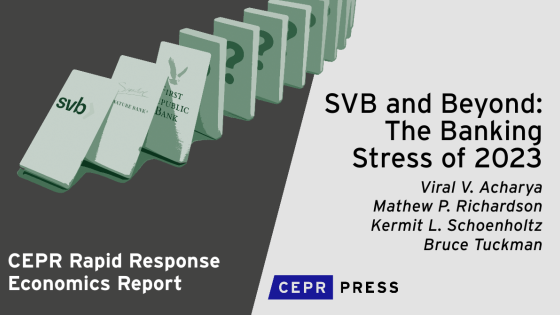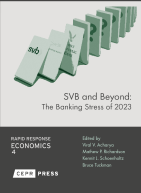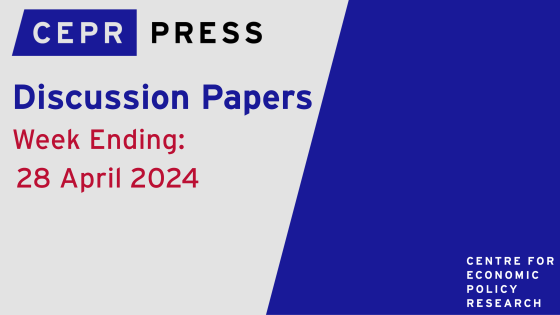Following the unexpected collapses of Silicon Valley Bank (SVB), Signature Bank, and First Republic Bank, along with the depositor panics affecting other medium-sized US banks, a new CEPR Rapid Response Economics Report, edited by Viral V. Acharya, Mathew P. Richardson, Kermit L. Schoenholtz and Bruce Tuckman, with contributions from prominent accounting, economics and finance specialists, provides a comprehensive analysis of the 2023 US banking crisis. The authors scrutinise the episode through the multiple lenses of economics, regulation, and accounting, aiming to identify the weaknesses that precipitated the crisis. The report evaluates bank business models from both societal and systemic risk perspectives and provides suggestions to reinforce the banking sector, ensuring future financial stability.
The report elucidates how the root causes of the 2023 US banking stress can be traced back to investments in high-risk, long-term assets using unstable funds from uninsured deposits, which resulted in significant breakdowns in bank risk management. The authors highlight how regulators either missed or didn't act on these issues and consequently, when depositors saw these banks as shaky, they hastily withdrew their funds. In addition to remarkably poor management by the failed banks, post-pandemic monetary and fiscal macroeconomic policies contributed to the crisis by rapidly expanding the deposit base and encouraging banks to take on more risks.
While policymakers appeared to have learned from past mistakes and enacted substantial reforms since the global financial crisis of 2007-09, the authors argue that they fell into a misconception that they had successfully addressed all banking risks, only to discover a new issue involving short-term bank liabilities, specifically uninsured deposits, which were triggered by a risk that was assumed to be well comprehended – interest-rate risk. An accumulation of supervisory lapses over the preceding years played a substantial role in the buildup to the crisis and consequently, less than 15 years since the collapse of Lehman Brothers and subsequent failure of major financial institutions, there are once again indications of ongoing banking stress with credit crunch implications for the real economy.
Nonetheless, the report stresses that policymakers possess the capacity to introduce reforms capable of alleviating ongoing banking strains and reducing the potential for subsequent failures. Given the complexity arising from significant bank runs and the resulting model risks, a prudent approach to banking sector policy should strive to be adaptable, nuanced, and robust.
The suggested solutions are wide-ranging and include conducting stress tests to assess banks’ susceptibility to risks that account for stagflation scenarios; coordinated oversight of capital and liquidity risks to address the core compound risk that triggered the 2023 US bank failures; modifications in mark-to-market accounting practices to avert significant disparities between regulatory capital and real balance sheets; changes in deposit insurance to discourage motivations for, and dealing better with the aftermath of, runs on uninsured deposits; measures to reduce the quasi-lender-of-last-resort role of Federal Home Loan Banks in the United States, which extended the decline of struggling banks; and a range of improvements to established capital and liquidity regulations and their supervision to reinforce the resilience of the US financial system.
“It is our hope that this report - with its eclectic approach that relies on theory as well as data, normative policy as well as its practice, and historical context as well as focus on the present - serves as a useful guide to recover from the ongoing banking stress and prevent a repeat of these follies in future.”



